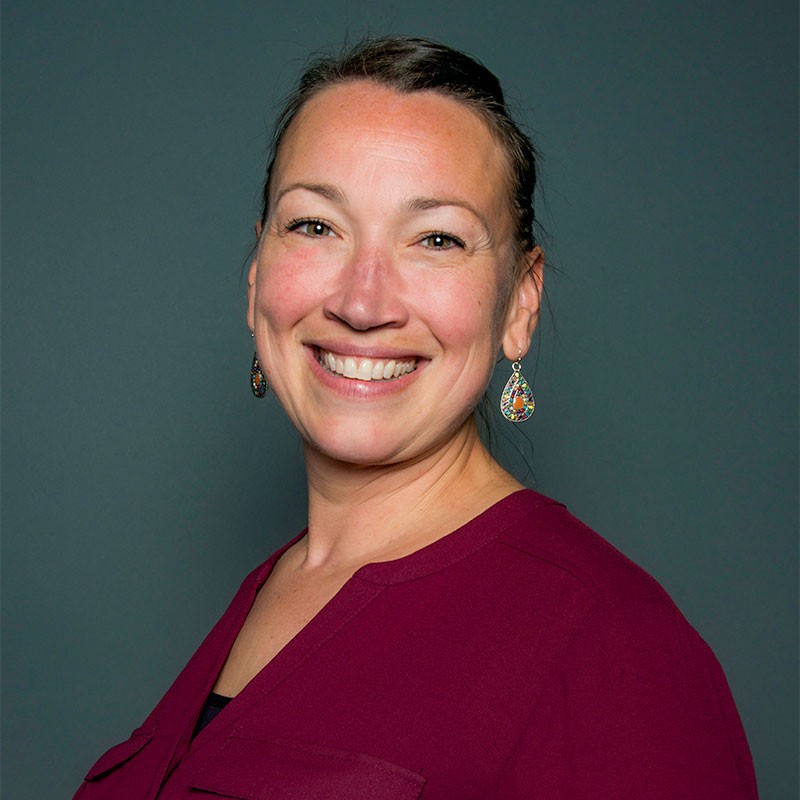How to Open a Beauty and Wellness School
13 Key Areas to Consider
Starting a new school is a big milestone and Milady is here to support you every step of the way. Our New School Resources Guide is your go-to hub for everything you need to build a strong foundation. Whether you're just getting started or looking to elevate your existing program, this guide is designed to help you create a modern, inclusive, and career-ready learning environment.

Maybe you're a salon owner who sees opening a beauty and wellness school as the next logical step in your career. Or maybe you're passionate about educating the next generation of beauty professionals. Perhaps you have an entrepreneurial spirit and believe a cosmetology school fits your long-term vision.
Whatever your reason for wanting to open a beauty and wellness school, this guide is for you. Below, we're covering 13 key areas:
- Market Assessment
- Business Structure and Business Plan
- State Licensing Requirements
- Curriculum Development
- Location and Equipment
- School Culture
- Staff (Hiring and Training)
- Policies and Procedures
- Technology/Software
- Tuition and Payment Options
- Marketing and Recruitment
- Ongoing Compliance
- Scaling and Accreditation
A couple of important points before we continue . . .
First, be aware that you'll be tackling several areas simultaneously. For example, developing your business plan and researching state requirements will dovetail. (Your state's requirements will guide everything you do.)
Second, you might think you don't need to worry about accreditation right now since your school must be open for two years before you can even apply. However, complying with accreditation requirements now will save you the hassle of redoing things (like procedures and policies) in a few years.
Ready to dive in? Let's go.
1. Assess your dream—and the market.
Opening and operating a beauty and wellness school takes a lot of work. So if you're a salon owner who already gets frazzled managing four employees, ask yourself how you'll feel managing a school with five educators and fifty students.
Be honest about whether running a business of this size and scope fits where you're at in your professional and personal life. There's no shame in entertaining the idea, taking a long, hard look, and realizing operating a beauty school isn't for you. Remember, there are other ways to get involved in education, like teaching.
You'll also want to assess the market. Would a cosmetology school be a viable business in your area? Where's the nearest competitor? If there's another school within the vicinity, is it at maximum capacity with a waitlist (which would suggest the marketplace could support another school), or is it struggling with enrollment?
You should also take a hard look at your financial situation. The cost of opening a school involves many factors and will vary depending on things like the location and the school's size. Online sources (like this one and this one) suggest that opening a school could cost $150,000 on the lower end to $500,000 or more on the upper end. Does taking out loans and raising capital feel manageable based on your current finances?
And one final point: Opening a beauty and wellness school doesn't happen overnight. It can take anywhere from one to two years, depending on state regulations, facility readiness, and your ability to meet staffing and licensing requirements.
- PRO TIP: The U.S. Small Business Administration has a solid guide on how to conduct market research and competitive analysis.
2. Define your business structure and develop a business plan.
You'll need to decide what business structure makes the most sense for your school. For example, a sole proprietorship, limited liability company (LLC), partnership, S corporation, or corporation.
Your decision will influence what sort of tax identification number you need (SSN vs. EIN) and how and when you pay taxes. Don't go it alone here. A conversation with a small business attorney and an accountant can save you time and money later on.
- PRO TIP: This directory offers a user-friendly way to search for lawyers based on location and area of expertise. Another place to check is your local Chamber of Commerce. SCORE (partnered with the U.S. Small Business Administration) offers free business mentoring and can help refer you to local professionals like accountants.
As for a business plan, the basic elements include an executive summary, company description, market analysis, marketing strategy, financial plan, and operational plan.
If you own a salon, you likely have experience developing a business plan. However, a business plan for a cosmetology school is much more complex since it's an educational institution subject to rigorous regulatory, operational, and curricular requirements that go far beyond what's needed for a service-based business like a salon.
For example, the financial section will need to address enrollment strategies and tuition procedures and policies, and the section on marketing strategy will need to address three audiences: students, staff, and clients for the student salon.
- PRO TIP: The U.S. Small Business Administration website has excellent guidance on how to write a business plan and free resources to assist you.
3. Research your state's licensing requirements.
Every state has licensing requirements that you must follow. While some states have a dedicated board of cosmetology, others use broader licensing agencies.
For example, New Mexico has a governing body called the Board of Barbers and Cosmetologists. Texas, on the other hand, does not have a separate cosmetology board anymore. Instead, it operates under the broader Texas Department of Licensing and Regulation (TDLR), which oversees cosmetology and many other trades, like electricians.
California adds another layer of complexity. You'll need approval from two agencies: the Bureau for Private & Post-Secondary Education (BPPE) and the California Board of Barbering and Cosmetology.
The takeaway: You need to know the specific requirements for your state.
- PRO TIP: The American Association of Career Schools (AACS) has an excellent online resource for finding your state's licensing requirements. Bookmark them, read them carefully, and whenever you have a question about something, start there, because the answer is almost always contained within them.
4. Develop your curriculum.
Curriculum development is a significant undertaking. Some states provide broad guidelines for cosmetology programs, simply indicating that the license covers hair, skin, and nails, while others are incredibly detailed. They might specify exact hourly requirements, like "200 hours in hair cutting" or "100 hours in infection control." Additionally, some states even mandate specific numbers of practical applications, like 75 completed haircuts.
When developing your curriculum, consider these critical questions:
- What does your state mandate?
- What does your state test on?
- What skills do your students need to succeed in entry-level roles?
It's essential to understand that state mandates and state licensing exams don't always align perfectly. Often, licensing exams focus only on the basics, whereas your curriculum might need to cover broader skills, such as communication, soft skills, or even foundational business knowledge. While your state might not require these skills explicitly, they are critical for graduates entering the workforce.
- PRO TIP: All Milady curricula are built with both exams and career readiness in mind and are already referenced by most state boards. Plus, pricing is clear and up front. Need help navigating options? Attend a free Milady Office Hours session and talk it through with the team.
A best practice is to form an advisory council.
Such councils, typically composed of local salon owners, industry experts, and other stakeholders, can provide invaluable insights into the market's needs and expectations. Advisory councils help you strike the right balance between mandated content, testing requirements, and market demands, ensuring your graduates are highly employable.
Another often-overlooked but crucial decision is determining your enrollment schedule.
How frequently will you enroll new students—every four weeks, monthly, quarterly? Enrollment frequency significantly impacts your cash flow and curriculum scheduling. A common schedule among cosmetology schools is enrolling new students every three to four weeks, allowing manageable student onboarding, structured classroom training (typically six to eight weeks), and a smooth transition into the student salon.
You'll also need to decide how many hours students will attend each week.
Will your program be full time (30–40 hours/week) or part time? Will students attend classes Monday through Friday, or Tuesday through Saturday? These decisions directly affect how you structure your curriculum, classrooms, staffing, and student salon operations.
Finally, consider your delivery methods and teaching materials.
Will you use printed textbooks and workbooks or go fully digital? Will you offer distance learning (sometimes called "remote" learning), where students take classes online?
An important point: A beauty school education can never be 100% distance learning, which makes sense when you think about it. Students need hands-on instruction, and that’s where the student salon comes in. But you can take a hybrid approach, combining online coursework with in-person training.
Of course, always refer to your state’s regulations to see whether distance learning is allowed and how much of your program can be delivered that way.
Also, keep in mind that curriculum development must occur for each specific program you offer. For instance, a standalone nail technician course, esthetics (skin care) course, or barbering program will have its own distinct requirements, separate from a full cosmetology curriculum.
Clearly defining these elements up front helps streamline your program planning and ensures your school meets regulatory requirements and industry expectations.
- PRO TIP: Before your curriculum is fully built, be aware that some state boards may require sample materials, like lesson plans, course outlines, or syllabi, as part of your initial application. This means you might need to prepare a basic framework earlier than expected. It doesn't have to be your final curriculum, but having polished examples ready can help move the approval process along and show that you're serious about delivering a well-organized program. Milady provides these sample materials as downloadable PDFs on our website, and once you are ready, you can purchase and/or access the full Course Management Guide, which is available online or on a USB.
5. Scout out locations and procure equipment.
Finding the right location and acquiring the necessary equipment for your cosmetology school involves multiple considerations. A key aspect is selecting a facility that meets state regulations, especially regarding required square footage for student-accessible areas.
- FYI: New schools must provide Milady with a copy of their Secretary of State filing to verify the school's physical address (no residences) and business status before opening an account.
Since cosmetology programs involve a student salon, focus on locations with good foot traffic. You could have the best school in the world, but if clients don't know about it or can't get to it easily, this will adversely affect your students' hands-on learning opportunities.
Successful schools often operate in busy strip malls or shopping centers, places easily accessible to customers. Ample parking is also important.
Another key consideration: STORAGE. Do not underestimate this. Beauty schools typically handle numerous bulky items like student kits, mannequin heads, products, and supplies. Insufficient storage is a common pitfall. Make sure your school has plenty of space to store these items.
Additionally, think practically about infrastructure needs:
- Electricity: Can the facility accommodate the electrical load of dozens of blow dryers operating simultaneously?
- HVAC: What are your heating, ventilation, and air conditioning needs and limitations, particularly considering the heat generated from salon equipment like blow dryers and styling tools?
- Water Heater: Is it gas or electric, and does it have sufficient capacity to handle the demands of a student salon?
- Wi-Fi: Can yours handle having 30 or 40 students online watching videos?
- Laundry: Does the space have adequate room for laundry equipment?
- Restrooms: How many restrooms are required and will you need to adequately serve your students, staff, and clients?
- Student salon and classroom layout: What kind of layout are you envisioning for each? For example, do you want an open floor plan or separate classrooms? If separate, how many do you need? What does the state require? How many students will be using the salon at once? (This is just the beginning. Layout could be its own guide.)
Regarding equipment, your school will need shampoo bowls, styling stations, mirrors, hydraulic chairs, and classroom furnishings—and that isn't an exhaustive list.
Your state might also mandate specific equipment quantities based on enrollment. For example, some states specify exactly how many shampoo bowls or styling stations you must provide per student. Always verify these requirements in advance.
Equipment can be sourced from specialized vendors. Salon-focused trade shows are helpful, though they're primarily geared towards professional salons rather than schools.
- PRO TIP: Online research can help identify reliable suppliers. Popular vendors for bulk classroom supplies and student kits include companies like Burmax and Marianna. You'll also need to decide whether to align your school with premium brand-name product lines or choose less costly products for initial classroom practice on mannequin heads.
6. Define your school's culture.
Before hiring your first instructor or enrolling your first student, take the time to define your school's culture. The culture is more than just aesthetics. It's your school's personality. It shows up in how your team communicates, how your space feels, what values you promote, and even the language you use in the classroom and student salon.
Think of culture as the answer to the question: "Who are we, and how do we show up in the world?" Are you aiming to be modern and trendy? Traditional and professional? Creative and high-tech? There's no wrong answer, but there is a wrong approach: not defining it at all.
Your culture will shape everything, from how your staff teaches to how students engage with their learning. It influences how you name your training phases, what you call your students and clients, and how your school is perceived internally and externally.
For example, some schools stick with standard terms like "freshman" and "senior," while others name their phases to match their vibe, using terms like "Phase 1" or "VIP" to reflect their unique brand and identity.
The point isn't to copy what other schools are doing. It's to choose a direction that aligns with your mission and to own it completely. That consistency will help your school stand out, and more importantly, it will give your students a sense of belonging and pride in the journey they're on.
- PRO TIP: Don't wait to define your culture. Nail it down early so it can guide everything from how you write policies to the vibe in your student salon. Consistency is what makes a culture feel real, not just aspirational.
7. Hire and train staff.
Start by understanding your state's rules around instructors. Some states (like New Mexico and Arizona) require instructors to have specific teaching licenses. Other states, such as California and Texas, don't have this requirement. If your state doesn't mandate licensed instructors, you'll need to figure out how to make sure your instructors can actually teach.
Remember, just because someone is great at styling hair in a salon doesn't automatically mean they can teach students how to do it.
A rule of thumb: You'll need at least two instructors early on—one to manage classroom instruction and another to supervise the student salon. (You can't expect one person to be in two different places at the same time.)
Beyond instructors, you'll also need to think about administrative roles. A dedicated admissions person is essential, especially as your school grows. At first, you might consider handling admissions yourself, but you'll quickly find this becomes a full-time job as you attract more students.
Additional staffing considerations include:
- Front desk and reception: Smaller schools might not have a dedicated receptionist. Students or instructors will often help cover the desk. But verify what your state allows regarding student involvement.
- Administrative duties: Tasks like tracking student hours, grades, satisfactory progress reports, academic advising, and financial management require consistent attention. Often, these roles overlap, especially in smaller schools. For example, you might initially handle admissions, tuition payments, and paperwork yourself while your instructors focus solely on teaching.
Don't overlook obvious things like who will handle cleaning responsibilities. You'll need to hire janitorial help or be prepared to tackle this yourself.
- PRO TIP: Consider using the Milady RISE Educator Program if you're in a state without formal teacher training requirements. Milady also offers a wide variety of continuing education for instructors.
8. Develop standard operating procedures and policies.
You can break down everything into five key categories:
- Corporate
- Personnel
- School operations
- Admissions
- Education
From there, you would develop all the policies for each category. For example, under education, you need policies for new student orientation, graduation requirements, and make-up test policies. (This isn't an exhaustive list, but you get the idea.)
For the personnel category, you need policies about vacation days, payroll deductions, and even something as seemingly benign as employee parking. (Again, not a complete list.)
Bottom line: You might be looking at 80 to 100 (or more) policies that you need to create.
- PRO TIP: We mentioned this point earlier, but we can't stress it enough: As you develop your initial set of policies and procedures, align them with the accreditation agency's standards. This way, you won't need to redo everything when you go for accreditation in a couple of years. Visit the Council on Occupational Education (COE) or the National Accrediting Commission of Career Arts & Sciences (NACCAS) for more information, including instructions on what to include in your policies.
9. Invest in reliable technology and software.
Running a beauty and wellness school involves juggling many moving parts, from managing student schedules and grades to booking client appointments in your student salon. Investing in reliable school management software is essential to stay organized (and sane).
Typically, these systems fall into two main areas:
- Front-of-house software handles student salon bookings, client appointments, and payments (essentially everything related to customer interactions and point-of-sale operations).
- Back-of-house software helps you track critical student information, such as attendance hours, grades, satisfactory academic progress, and academic advising records. It's your administrative backbone.
The right tools will help streamline daily operations, freeing you up to focus on delivering excellent education and creating a positive experience for students, clients, and staff alike.
- PRO TIP: Connecting with organizations like the American Association of Career Schools (AACS) is a great way to learn about popular vendors. You can ask attendees what tech they use. Plus, vendors regularly participate in AACS events, like the annual fall conference.
10. Determine tuition and payment options.
Setting your tuition and payment options requires careful planning and clear communication. Be transparent about all costs, including tuition, fees, kit costs, and any additional expenses students might encounter.
Outline your payment options up front, and remember that everyone absorbs information differently. Consider presenting this critical information in multiple formats, such as written text, easy-to-follow infographics, or short videos.
To help make tuition more accessible:
Offer flexible payment plans, like monthly or quarterly installments.
Partner with private student-loan providers to expand financing options.
Consider offering special introductory rates, often called "founders' pricing," to attract your initial wave of students.
Provide school-funded, in-house scholarships to assist students with financial needs.
Making tuition manageable helps broaden your student base and increases your school's appeal to prospective students.
- PRO TIP: Create a resource for students that outlines grants and scholarship opportunities. (Keep it updated.) Our Milady RISE Scholarship is one that you can add to your list. The AACS also has a list of scholarships that you can share with current and prospective students.
11. Create a marketing and recruitment plan.
Your marketing and recruitment efforts will target two distinct audiences: potential students and customers for your student salon. Each requires its own strategy.
Recruiting students:
Build a simple, informative website clearly outlining your programs, tuition, and (eventually) job-placement rates.
Attract potential students through local advertising, social media campaigns, open houses, high schools and guidance counselors, and community partnerships.
Carefully track all inquiries and follow up promptly—effective follow-up is critical for converting prospects into enrolled students.
An important factor to consider is how frequently your school starts new classes. Cosmetology students are known for making quick enrollment decisions. Many walk through the door and want to begin training immediately. If your start dates are too infrequent (for example, every six months), you'll risk losing potential students who might enroll elsewhere rather than wait. More frequent start dates can help maintain enrollment momentum.
Attracting salon customers:
- Develop a separate marketing strategy to attract clients to your student salon, such as targeted local advertising, promotions, special offers, and partnerships with local businesses.
- Promote your student salon separately from your educational programs—clients care more about convenience, quality, pricing, and the overall student salon experience.
By clearly identifying and targeting these two separate audiences, you'll increase enrollment and build a thriving client base for your student salon.
- PRO TIP: Don't forget social media marketing. Make sure your student salon has an active presence on places like Instagram and TikTok.
12. Maintain ongoing compliance and continuous improvement.
Running a successful beauty and wellness school isn't just about launching—it's about maintaining compliance and constantly striving to improve. Staying organized and tracking key information will be your best friend here.
Reporting Requirements
You must regularly submit enrollment, graduation, licensure, and job-placement data to your state board and/or accreditation agency. For example, some states require monthly reporting of student hours, so staying organized and on top of these reports is essential.
Renewals & Licensing
Keep track of all necessary license and permit renewals. Know your staff's continuing education requirements and document everything clearly and consistently. Good record-keeping is your secret weapon for stress-free renewals.
Gathering Feedback
Consistently collect feedback to help you fine-tune your curriculum and operations. Conduct exit surveys with every graduating student, and periodically contact employers who hire your graduates. But don't just wait until graduation. Survey students throughout their program (for example, every six months) to gather ongoing insights about your curriculum, instructors, and overall experience.
Tracking & Documentation
Accreditation experts always say, "Document everything." It's great advice. Having detailed records of student progress, instructor qualifications, and staff meetings is critical.
- PRO TIP: Don't make your policies so stringent that you set yourself up for non-compliance. For example, let's say you've set a policy to have weekly staff meetings, but you usually meet every other week. What happens when the accreditation agency notices you don't have minutes for every week? You've sabotaged your efforts by setting a standard you can't comply with. Instead, be realistic and say you'll have quarterly staff meetings. Doing them every month or every other week is fine, because you'll still be compliant. Bottom line: When in doubt, under promise and over deliver.
13. Prepare for scale and accreditation.
Once your school is up and running, you'll want to start thinking about what growth looks like in terms of enrollment and long-term credibility. A big milestone? Accreditation.
At its core, accreditation is a stamp of quality. It tells prospective students, "Hey, we've had outside experts evaluate our school, and they've confirmed we meet a recognized standard of performance."
Most schools pursue national accreditation through the National Accrediting Commission of Career Arts & Sciences (NACCAS) or Council on Occupational Education (COE) after two to three years of operation. In some states, accreditation may even be required to open a school.
Beyond credibility, accreditation opens the door to Title IV federal financial aid programs, which is a game-changer for students and your school's growth potential. But be aware: once you enter that world, your reporting and compliance responsibilities ramp up significantly.
At that stage, it's wise to hire a financial aid officer or work with experienced consultants specializing in financial aid compliance and administration (there are plenty out there).
- PRO TIP: Get involved with the American Association of Career Schools (AACS) early. It's one of the best ways to connect with other school owners, ask questions, get referrals for consultants, and understand what's coming down the pike. Accreditation can feel overwhelming, but the AACS community is incredibly supportive—and full of people who've been in your shoes.
Opening a cosmetology school is no small task. It's OK to ask for help.
The beauty industry thrives on connection. Sure, you might run into someone who's competitive, but most school owners are more than willing to share what they've learned. So, ask for help. And ask more than one person because some advice will click and some won't.
Whenever in doubt about the advice you receive, simply turn to your state's regulations. They govern everything from your curriculum to your daily operations. Get that right, and you're already more than halfway there.
And in the meantime, you can refer to this guide whenever you need to. We've covered a lot of ground, but remember that this is truly just the beginning.
Opening a beauty and wellness school involves dozens of moving parts, overlapping timelines, and evolving regulations. The goal here is to give you a big-picture understanding of what's involved so you can start asking the right questions, connecting with the right people, and planning your next steps with clarity and confidence.
We wish you the best of luck on your journey.
Why partner with Milady?
Check out the many benefits of working with Milady. Or drop into our online office hours, which we offer every week, and get answers to your questions.


















